Trees You Can Tap for Syrup (Beyond the Sugar Maple)
Tap more than just sugar maples for syrup. Learn which trees work best, how each syrup tastes, and what you’ll need to start tapping on your own homestead.
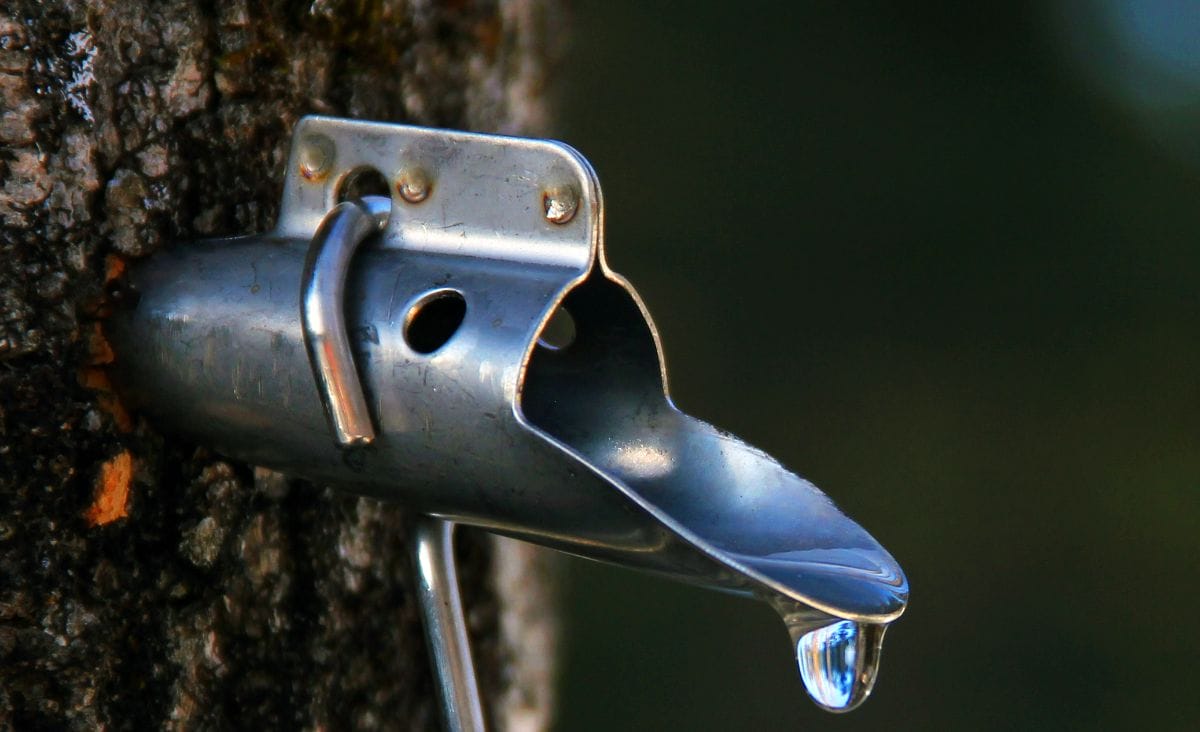
For years, I thought I was out of luck when it came to homemade syrup. I only had a couple of non-sugar maples on my property here in Maine, so I figured syrup-making just wasn’t in the cards. Turns out, I couldn’t have been more wrong.
You can tap lots of trees for syrup, not just sugar maples. From birch and walnut to sycamore and even ironwood, you’ve got more options than you think. Here’s what I tap, what it tastes like, and how to get started without buying special equipment.
Trees You Can Tap for Syrup
Each tree runs a little different (and the syrup does, too). Some yield rich, caramel-like syrup while others taste buttery, earthy, or tangy. If you’ve only ever tried maple syrup, you’re missing out. Here are the ones worth trying first.
Maples (Sugar and Beyond)
Most people think ‘sugar maple’ and stop there. They’re the classic choice because their sap has the highest sugar content, which means less boiling time and a stronger flavor. But don’t overlook other maple varieties. Red, silver, black, and even bigleaf maples are all tappable. They take longer to boil, but the flavor’s every bit as good.
- Sugar Maples: highest sugar; least boil time
- Red Maples: common in yards; slightly lower sugar
- Silver and Black Maples: lighter syrup; more boiling
- Bigleaf, Canyon, and Rocky Mountain Maples: western species with regional flavor
I tap red maples here. It takes more patience, but that first spoonful (sweet, rich, a bit lighter than sugar maple) makes it worth it.
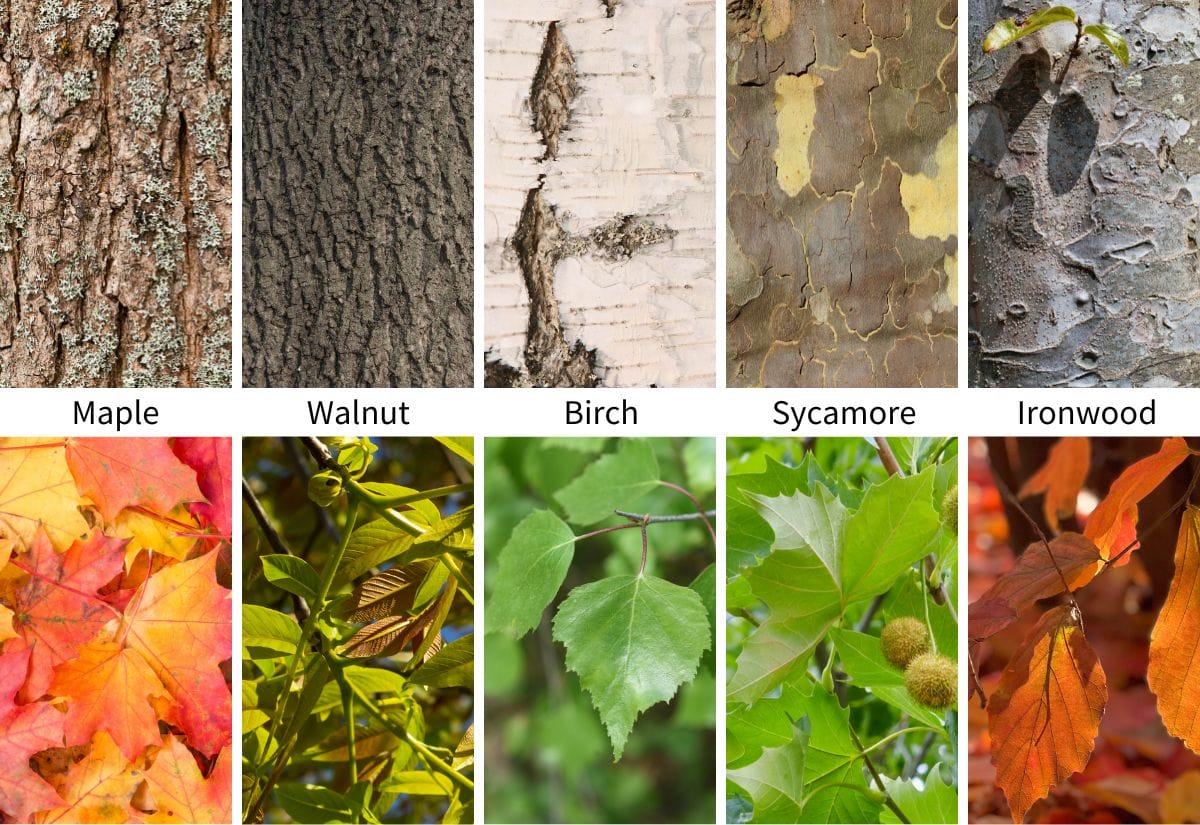
Walnuts
Yes, walnut trees can be tapped, too. Black, white, and English walnuts all produce sap, yielding a syrup that’s darker and earthier than maple. You’ll get less sap from walnuts, so batches run smaller, but the flavor makes up for it. It’s great on roasted vegetables or over vanilla ice cream.
Walnuts can be tapped at a younger age than most maples, so they’re a great option if your trees are still small.
Birches
Up in Alaska, birch syrup is a late-season staple. Paper, yellow, and black birches all work beautifully. The flavor leans tangy and caramel-like, almost savory, and it pairs nicely with meats, marinades, and glazes.
Birch is low sugar, so it takes roughly 100 gallons of sap to make one gallon of syrup, about twice the work of maple. It’s a bit of work, but the payoff’s worth it.
Sycamores
Sycamores get ignored, which is a shame. They’re common across much of the U.S. and produce a light, buttery syrup with a butterscotch flavor that’s unlike anything else. If you only have one or two sycamores, try blending the sap with maple or birch for a one-of-a-kind flavor.
Ironwood
Ironwood trees are less common but still tappable. Their sap runs late in the season, long after the maples and birches have finished, which makes them a nice bonus crop if you like extending syrup season. The syrup is rich and deeply flavored, almost like brown sugar with a hint of molasses.
Quick Look: Trees You Can Tap and What to Expect
| Tree | Flavor | Sap-to-Syrup Ratio | Season |
|---|---|---|---|
| Sugar Maple | Classic, rich | 40:1 | Late winter–early spring |
| Red Maple | Light, sweet | 50:1 | Late winter |
| Birch | Tangy, caramel | 100:1 | Early spring (after maples) |
| Walnut | Earthy, dark | 60:1 | Late winter |
| Sycamore | Buttery, mild | 60:1 | Late winter–early spring |
| Ironwood | Deep, molasses-like | 80:1 | Early spring |
How to Tap Trees (Step-by-Step)
Tapping isn’t complicated, but timing and a little prep make all the difference.
Choose healthy trees at least 10 inches in diameter.
- 10–17 inches: 1 tap
- 18–24 inches: 2 taps
- 25 inches or more: 3 taps
Drill 1.5–2 inches deep at a slight upward angle. Insert the spile (tap) snugly, then hang a bucket or collection bag.
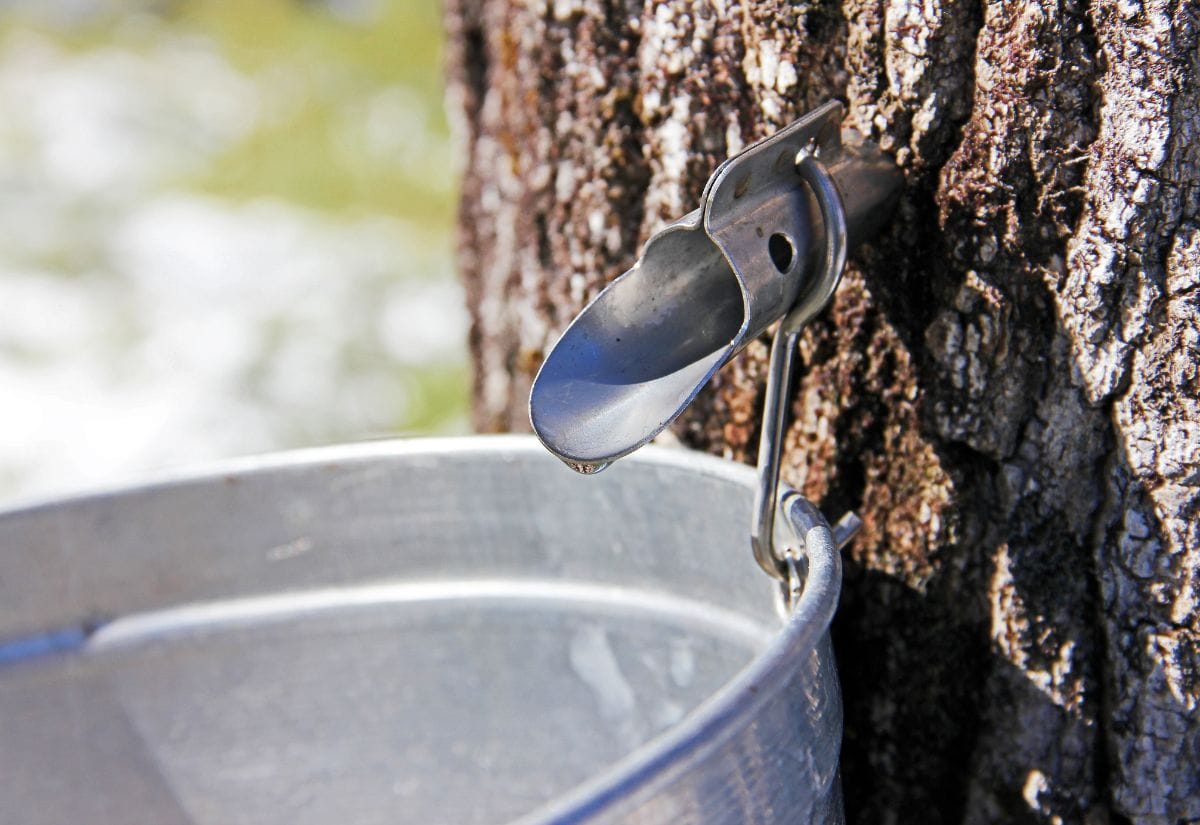
Watch the weather. Sap runs best when days are above freezing and nights are below. If a warm spell hits, pull the buckets at night to keep sap fresh. Here in Maine, that’s usually late February through March.
Collect and boil. The sap looks like water but tastes faintly sweet. Boil it down until it thickens to syrup (around 219°F).
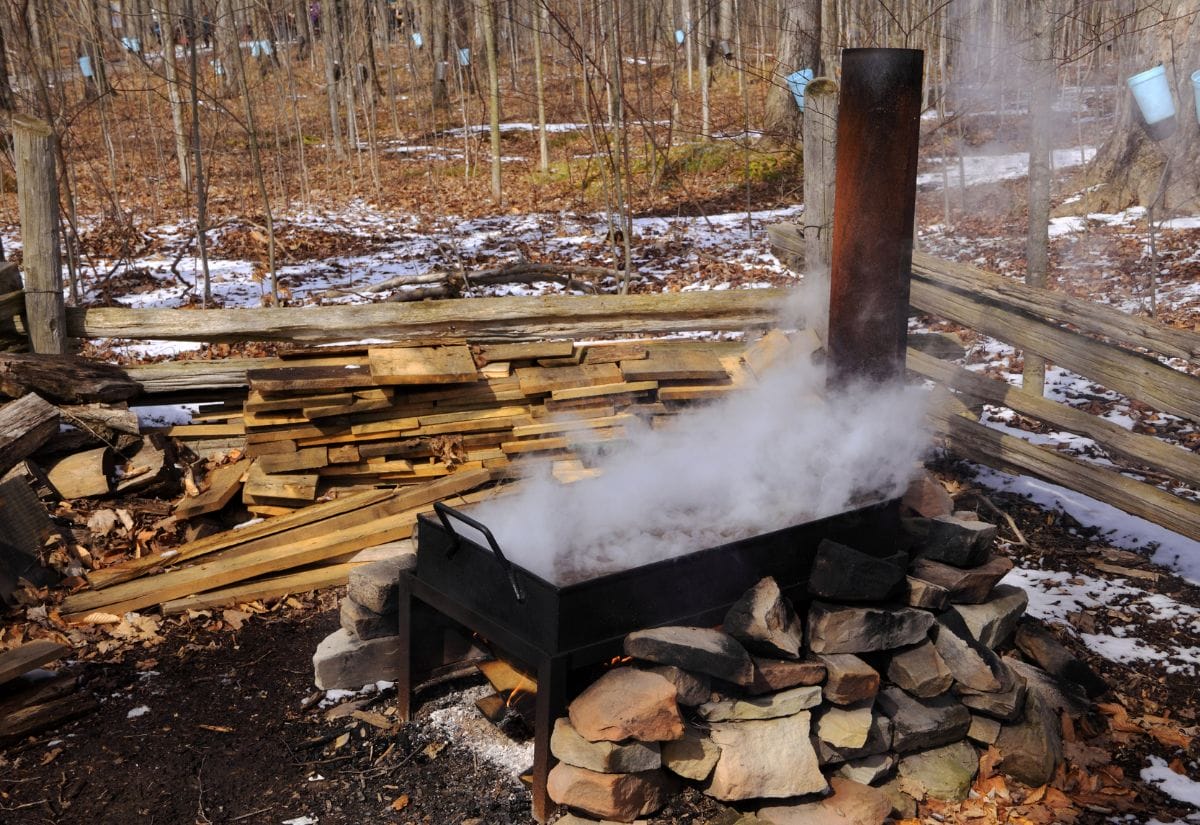
If you’re starting from scratch, a basic tapping kit makes it easy. It has the taps, tubing, filters, and directions in one bundle.
What to Expect from Each Type of Syrup
They all taste a little different:
- Maple syrup is rich and familiar, perfect for pancakes or baking.
- Birch syrup is tangy and caramelized, great for meats or vinaigrettes.
- Walnut syrup is bold and earthy, especially good in desserts.
- Sycamore syrup has buttery notes that make it great on French toast.
- Ironwood syrup is dark and complex, perfect for drizzling over warm bread.
If you’re short on sap from any one tree, try blending them. One of my favorite experiments was mixing red maple and birch—lightly sweet with a caramel edge. I liked it best on corn bread.
Tips for Syrup-Making Success
Here’s what’s made the biggest difference for me:
Timing matters. Sap stops flowing once buds start forming, so tap early. Late sap tastes woody/buddy.
Watch your boil. A wide, shallow pan speeds evaporation, but syrup can scorch quickly.
Filter the finished syrup through cheesecloth or a syrup filter to remove sugar sand.
Store it properly. Syrup keeps best in sterilized glass jars in the fridge or freezer. If canned hot and sealed tightly, it’s shelf-stable for months.
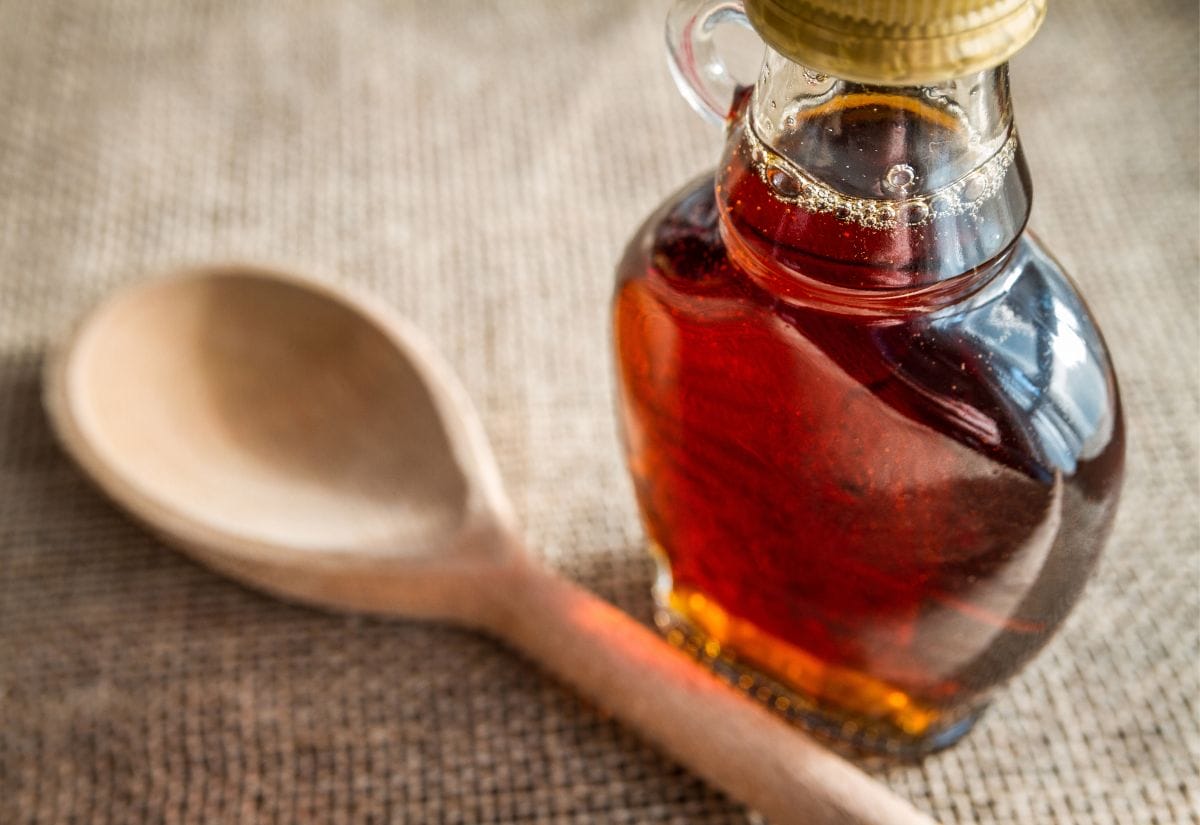
I chill it as a natural electrolyte drink, use it for tea or vinegar, and freeze the extra in ice cube trays for summer. It’s like bottling a bit of spring for later.
Common Questions About Tapping Trees for Syrup
If you’re trying this for the first time, or you’ve tapped before and want better yield, these are the questions I hear most.
If syrup-making is on your homestead bucket list, pin this post for later. You’ll want it handy when the sap starts running.
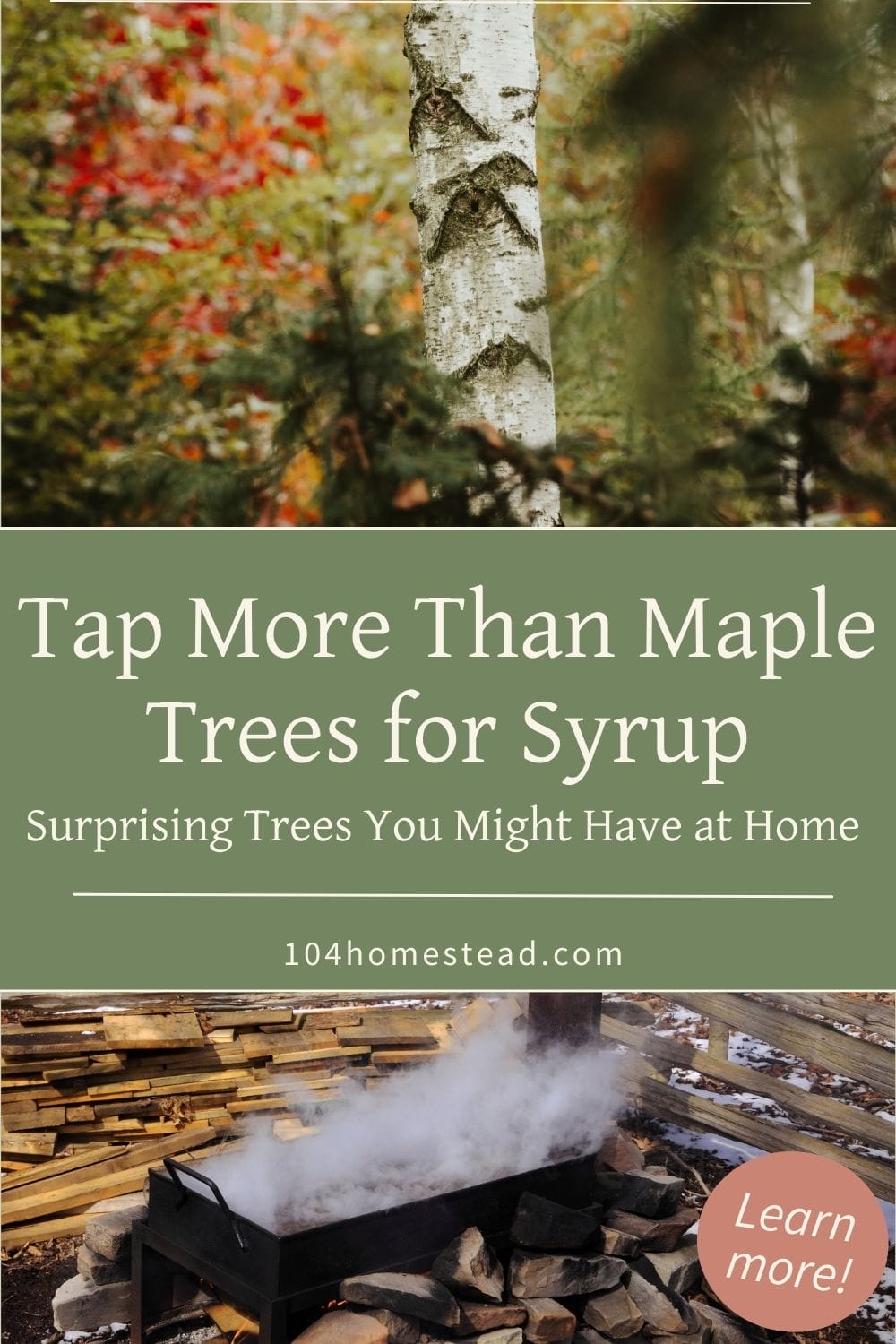
Tapping trees for syrup plugs you right into the season. Quiet woods, a steady drip, the first rolling boil. It’s simple work that feels good after a long winter.
Whether you’ve got a yard full of maples or just one birch by the driveway, you can make syrup. Start small, keep notes, and you’ll figure out what runs best on your land. If you love it (and you probably will), add a couple taps next year and call it progress.
When the sap slows, turn that curiosity toward wild foods. If you’re new to it, start with foraging edible plants right outside your door and, if you’re local, browse what to forage in Maine and where to find it for month-by-month ideas. Feeling kitchen-crafty? Try pickled wild onions in a honey-rosemary brine.
And when you finally pour that first jar, you’ll get it. It’s not just the syrup. It’s the season, the patience, and the quiet win of making something with your own two hands.
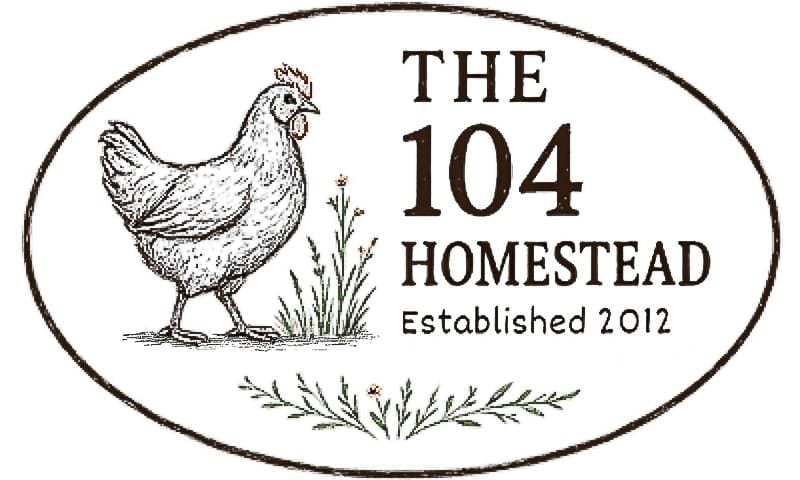




Can you tap cottonwood tree for syrup?
I’ve had great luck using Norway maples on my two acre lot.
As I understand it, boxelder can be tapped for syrup, too. It’s in the maple family.
Vermont is far from “the syrup capital of the world” Quebec produces 72% of the worlds Maple Syrup, Vermont, 6%.
What tree are you referring to as “Ironwood” I know of at least 3 trees in eastern North America that have that name, it is colloquial, not a proper name.
I was just going to say.. sorry not the syrup capital of the world… not even close… Quebec Canada holds that title and has for a long time and it won`t be handing it over to vermont anytime soon. Quebec averages 7,989,000 gallons of syrup a year… Vermont only produces 890,000 so it`s not even a close race.
But what their saying our north eastern states are our syrup cap. Of the USA. Maybe not the world but mighty fine syrup for all of us. So let’s not fuss over whose syrup is the best. Ty. ?
I was just scrolling down here to ask the same thing, too many trees called ironwood for that to be useful. Also, the couple tree I know of being called ironwood I don’t think really ever get big enough to tap.
More amazing yummy stuff from your trees is the sugar water. It is one of our favorite things to set taps and then when the buckets are full (there are times when it is hard to keep up with the flow) we just bring the bucket inside and ladle that amazing sweet water into a glass and drink. It is chilled and slightly sweet and SO GOOD. Like tree juice…only not nearly as sweet as real fruit juice. This is also high end goods, as in VT they bottle this yummy stuff and call it VT sweet water, and it isn’t cheap for a lovely small glass bottle of it. So empty your buckets right into your glasses, as a wonderful treat. Then of course boil the rest.
It takes approx 43 gallons of sap to make one gallon of syrup. (40-50 depending on sugar content of sap) just thought I’d pass that along for those interested 🙂
refreshing blog entry. Would love to learn and have the perfect maine yard.
I am so excited to do this! We have maples and sycamore all over the place!
Do you know if mulberry trees are good for tapping to make syrup?
My family started tapping black walnuts on our property last year. We had a lot of fun, with some great tasting results. We are looking forward to trying our hand at tapping our maples this year. Thanks for the great giveaway!!!
I was at the Pennsylvania Farm Show this past week and saw stuff about tapping other trees there, too. I didn’t know about this before. Of course, I couldn’t leave without taking home maple candies — yumm!
Well of course, you’ve got to have your maple candies 🙂
My family has tapped silver maples on our property for 2 years in West Virginia. We need more taps! Thank you!
I am fascinated with the idea of making my own maple syrup. When we buy property later this year, maple trees are a priority!
Would love to start making my own Maple syrup. We have over 100 acres of Maples, all kinds, and Birch, all kinds. Let the syrup begin.
Awesome!
This is awesome! My brother makes maple syrup… but maybe he shouldn’t have *all* the fun! 🙂
~ Christine
It’s messy, but oh so fun!
We have 11 Sugar Maples tagged, can’t wait to tap!
Thank you for such a fantastic giveaway.
What a wonderful giveaway! Thank you.
awesome! Our family was just talking about this. Most thought you had to have sugar maples but I was thinking there were other trees that would work. Can’t wait to show them this post.
We are starting this also. My question is..should we mix sap from different trees and does this do any harm to the trees? Thank you 🙂
I was wondering that myself, and honestly I don’t know. I would check out your Cooperative Extension office for a reliable answer. I plan to contact mine.
Great info.
Thanks!